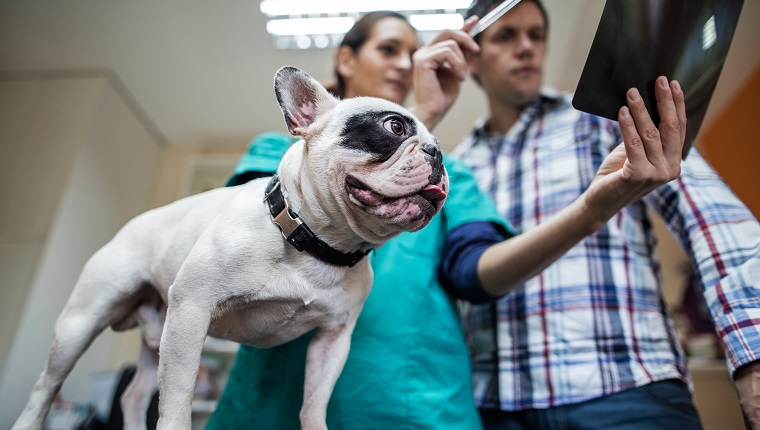Pneumothorax in dogs is a condition where air manages to build up in the space between the chest wall and lungs. This space is known as the pleural cavity.
The condition is categorized in a number of different ways depending on the type that has developed in the dog. Some of the different types include traumatic pneumothorax, spontaneous pneumothorax, and open or closed pneumothorax.
If you see concerning signs and symptoms in your dog, then you must consult your veterinarian for a proper diagnosis and course of treatment. Here’s what you should know about the symptoms, causes, and treatments of pneumothorax in dogs.
Symptoms Of Pneumothorax In Dogs
The symptoms of pneumothorax in dogs will vary depending on the precise type of pneumothorax that has developed. Some of the most common general symptoms include:
- Breathing rapidly
- Increased heart rate
- Difficulties breathing
- Diarrhea
- Becoming lethargic
- Vomiting
Causes Of Pneumothorax In Dogs

The cause of pneumothorax in dogs will again depend on the precise type of the condition that the dog has contracted.
In cases of traumatic pneumothorax, some sort of shock or physical accident might be the cause. Some surgical procedures can also bring about a case.
When it comes to spontaneous pneumothorax, the range of causes includes parasites, a foreign body entering the lung area, and pulmonary bullae, which resemble blisters in the lung.
Treatments For Pneumothorax In Dogs
If you think that your dog might be suffering from pneumothorax, your veterinarian will conduct a number of tests to confirm or rule out the condition.
They may use a minute camera attached to a tube to view the dog’s airways. This procedure is known as a bronchoscopy.
The vet can also insert a catheter into the pleural cavity to monitor what’s going on in the area. X-rays of the chest area can prove useful in diagnosing the condition, as well.
Once the vet confirms the diagnosis, there’s a strong chance that the dog will need a surgical procedure to remove air from the pleural cavity area. Vets can also use oxygen therapy to help a dog recover.
While recovering, dogs should lead a relaxed lifestyle and keep physical activity to a minimum.
Has your dog ever suffered from pneumothorax? How did your vet help your dog recover? Tell us all about it in the comments below.









